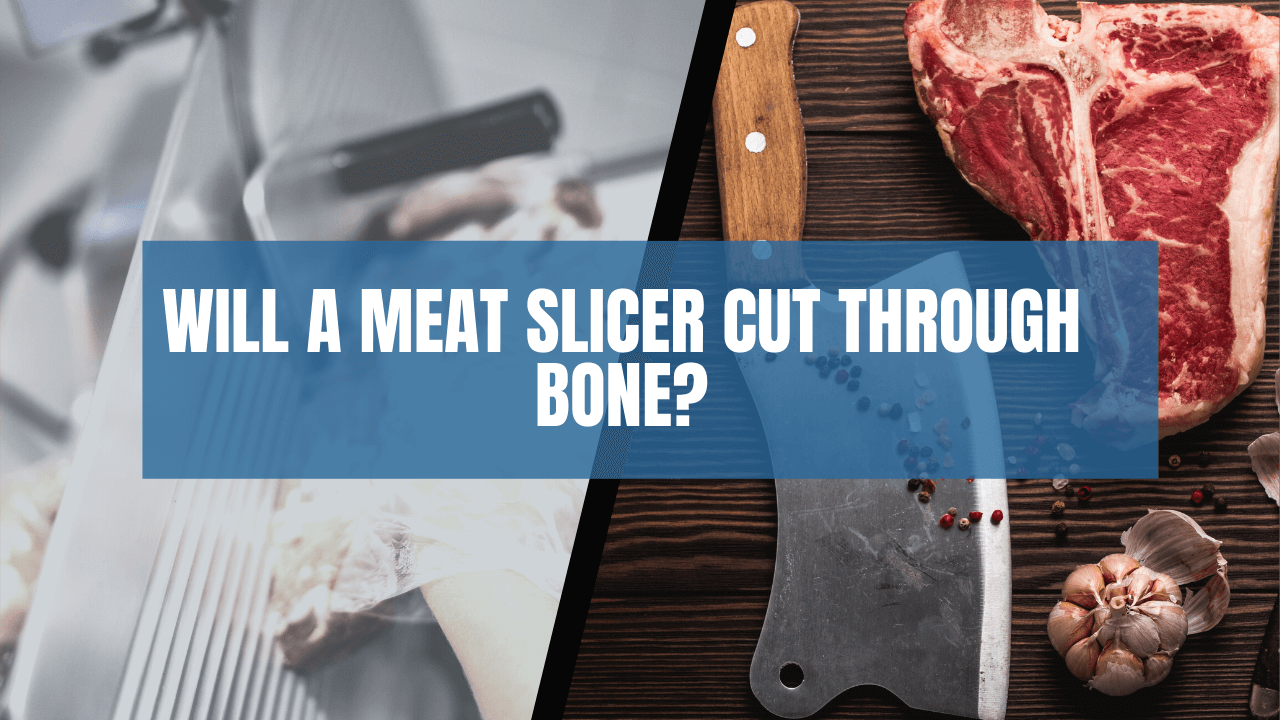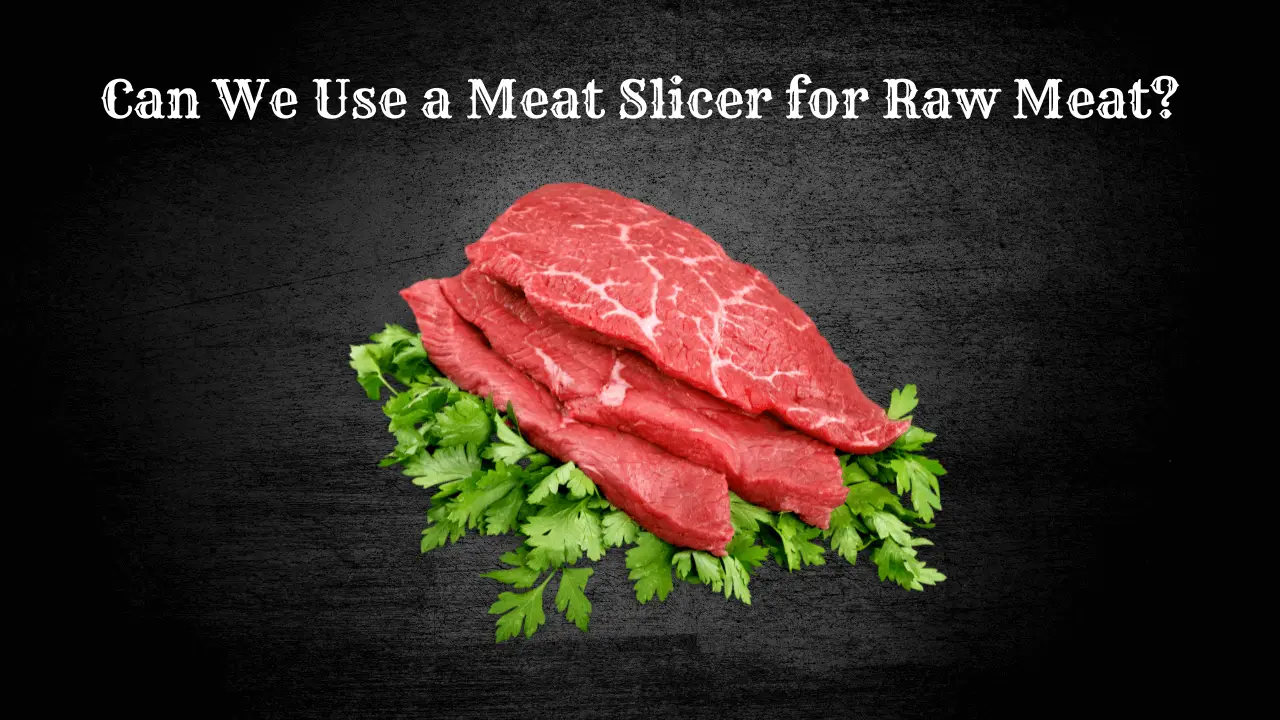When choosing between fresh sliced deli meat and pre-packaged meat, there are several factors to consider. Fresh sliced deli meat, often found at the counter of a grocery store or a butcher shop, is usually sliced on demand and can be customized to the buyer’s preferences for thickness or quantity. On the other hand, pre-packaged meat is prepared and sealed in a factory setting, offering convenience and longer shelf-life due to the addition of preservatives.
Fresh Sliced Deli Meat vs Packaged Meat
Taste and Texture
Fresh Sliced Deli Meat
When it comes to taste and texture, freshly sliced deli meat has much going for it. Since it’s cut to order, it typically has a fresher taste and a more tender texture. The meat is also usually less processed, meaning you can expect a more natural flavor and mouthfeel.
Packaged Meat
Packaged meat, on the other hand, can sometimes have a more processed taste and texture. This is because it often contains preservatives and additives to extend shelf life. However, some high-quality packaged meats can come close to the taste and texture of freshly sliced deli meats.
Nutritional Value
Fresh Sliced Deli Meat
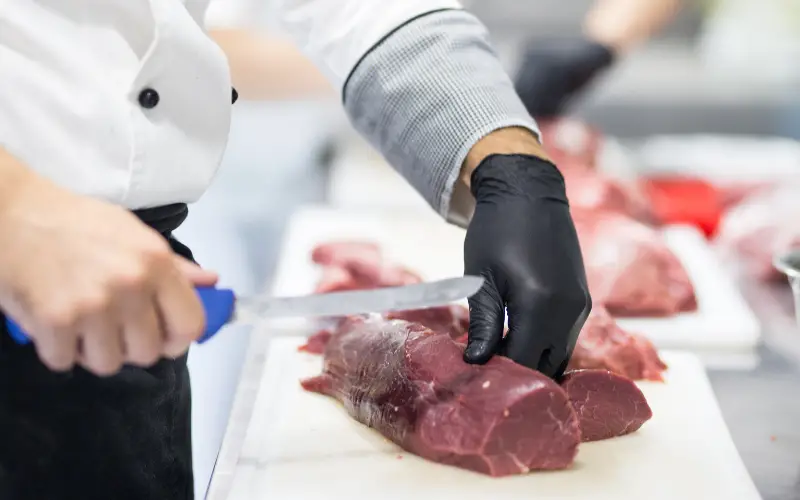
In general, freshly sliced deli meats are less processed and contain fewer additives, which can result in a healthier option. They tend to have lower sodium content and fewer artificial ingredients than their packaged counterparts.
Packaged Meat
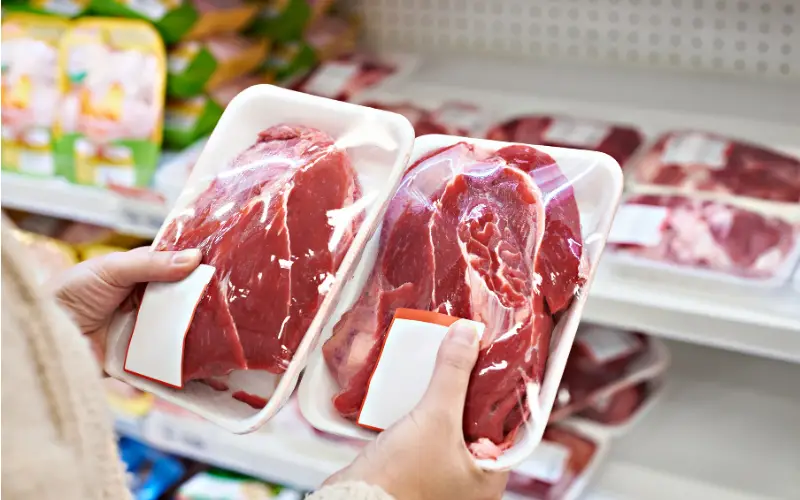
Packaged meats often have higher sodium levels due to the preservatives and additives that extend shelf life. This can concern individuals looking to limit their sodium intake for health reasons. However, some brands offer low-sodium or “natural” options that may have a more similar nutritional profile to fresh sliced deli meats.
Convenience and Shelf Life
Fresh Sliced Deli Meat
One major drawback of fresh sliced deli meat is its short shelf life. Since it doesn’t contain preservatives, it should be consumed within a few days of purchase. Additionally, it usually requires a trip to the deli counter, which can be less convenient for some shoppers.
Packaged Meat
Packaged meat offers a longer shelf life thanks to its preservatives and vacuum-sealed packaging. This can be a significant advantage for those who don’t want to visit the grocery store frequently or prefer to buy in bulk. Plus, it’s readily available in the refrigerated section, making it a more convenient option for many.
Cost
Fresh sliced deli meat is often more expensive than packaged meat. This is because it’s typically higher quality, with fewer preservatives and additives. The labor in slicing and packaging the meat at the deli counter also contributes to the higher cost. On the other hand, packaged meat can be more affordable due to its mass production and longer shelf life. However, it’s important to remember that the cheapest options might sacrifice taste, texture, and nutritional value.
Environmental Impact
The environmental impact of freshly sliced deli meat and packaged meat depends on various factors, such as production methods, packaging materials, and transportation. Packaged meats tend to have a larger carbon footprint due to plastic packaging, which can contribute to pollution and waste. On the other hand, freshly sliced deli meat typically has less plastic waste, as it is often wrapped in paper or thin plastic film. However, the overall environmental impact will vary depending on the meat and production practices involved.
Safety Considerations
Fresh Sliced Deli Meat
Safety concerns can be associated with freshly sliced deli meat, particularly regarding the risk of bacterial contamination. Since it’s cut and handled at the deli counter, there may be a higher chance of cross-contamination. It’s crucial to ensure proper food handling practices and store the meat at the correct temperature to minimize risk.
Packaged Meat
Packaged meats are typically safer from a bacterial contamination standpoint, as they are sealed in a controlled environment. However, there is still a risk of contamination if the packaging is damaged or not properly sealed. It’s essential to check the package for any signs of damage or leaks and store the meat at the appropriate temperature.
FAQs
Which is healthier, fresh sliced deli meat or packaged meat?
Fresh sliced deli meat is generally healthier due to its lower sodium content and fewer additives. However, some packaged meat brands offer low-sodium or “natural” options that may be more comparable regarding nutritional value.
How long does fresh sliced deli meat last in the refrigerator?
Fresh sliced deli meat should be consumed within 3 to 5 days of purchase. Always store it in the refrigerator at the proper temperature to ensure freshness and safety.
Can I freeze fresh sliced deli meat to extend its shelf life?
Yes, you can freeze fresh sliced deli meat to extend its shelf life. Be sure to wrap it tightly in plastic wrap or airtight freezer bags to prevent freezer burn.
What is the best way to store packaged meat?
Store packaged meat in the refrigerator, following the storage instructions on the packaging. Ensure that the packaging is sealed and free of damage to maintain freshness and safety.
Are there eco-friendly alternatives to plastic packaging for deli meats?
Some delis and grocery stores offer reusable or compostable packaging options, such as beeswax wraps, paper, or reusable containers. You can bring your own reusable containers to the deli counter for a more eco-friendly option.
Conclusion
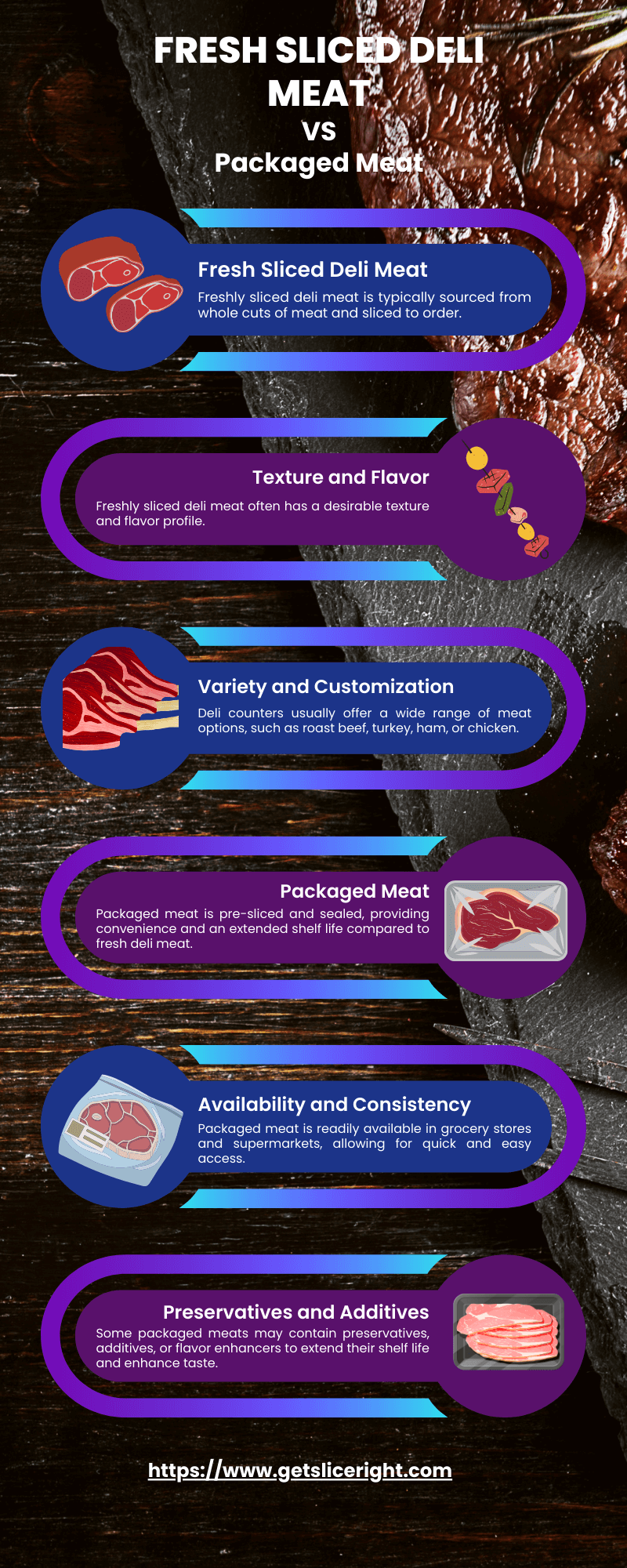
Both freshly sliced deli meat and packaged meat have their advantages and disadvantages. Freshly sliced deli meat offers a better taste, texture, and potentially healthier nutritional profile but may be more expensive, less convenient, and have a shorter shelf life. Packaged meat provides convenience, a longer shelf life, and a lower cost, but it may not have the same taste, texture, or nutritional value as fresh sliced deli meat. Ultimately, the decision will come down to personal preference, budget, and lifestyle considerations.
References
- proper food handling practices – This Foodsafety.gov page provides information on the four steps to food safety, which can help minimize the risk of bacterial contamination in fresh sliced deli meat.
- freezing fresh sliced deli meat – This StillTasty article offers guidelines on how to freeze deli meats properly to extend their shelf life.
- carbon footprint of meat production – This Our World in Data article discusses the environmental impacts of food production, including the carbon footprint of different types of meat.
| Aspect | Fresh Sliced Deli Meat | Packaged Meat |
|---|---|---|
| Taste and Texture | Fresher taste, more tender texture | May have a more processed taste and texture |
| Nutritional Value | Less processed, lower sodium content | Often higher in sodium, more additives |
| Convenience | Requires a trip to the deli counter | Readily available in the refrigerated section |
| Shelf Life | Shorter (3-5 days) | Longer, due to preservatives and packaging |
| Cost | Typically more expensive | More affordable, but may sacrifice quality |
| Environmental Impact | Less plastic waste | More plastic waste due to packaging |
| Safety Considerations | Risk of bacterial contamination | Lower risk, but packaging must be undamaged |

Mario Batali is a renowned author, food enthusiast, and passionate chef who has dedicated his life to exploring the world of culinary arts. With a love for sharing his knowledge and experiences, Mario has become a prominent figure in the food blogging community, inspiring countless readers with his creativity and expertise.
In addition to his culinary prowess, Mario Batali is also a talented writer with a flair for engaging storytelling. He launched his own food blog to share his recipes, cooking tips, and personal experiences in the kitchen. Over time, Mario’s blog gained a loyal following of food enthusiasts who appreciate his unique approach to cooking and his dedication to using only the finest ingredients.
Mario Batali’s passion for food and his commitment to sharing his knowledge with others have made him a true inspiration in the world of culinary arts. Through his blog, cookbooks, and public appearances, Mario continues to spread his love of food and the joy of cooking with his ever-growing fanbase.

